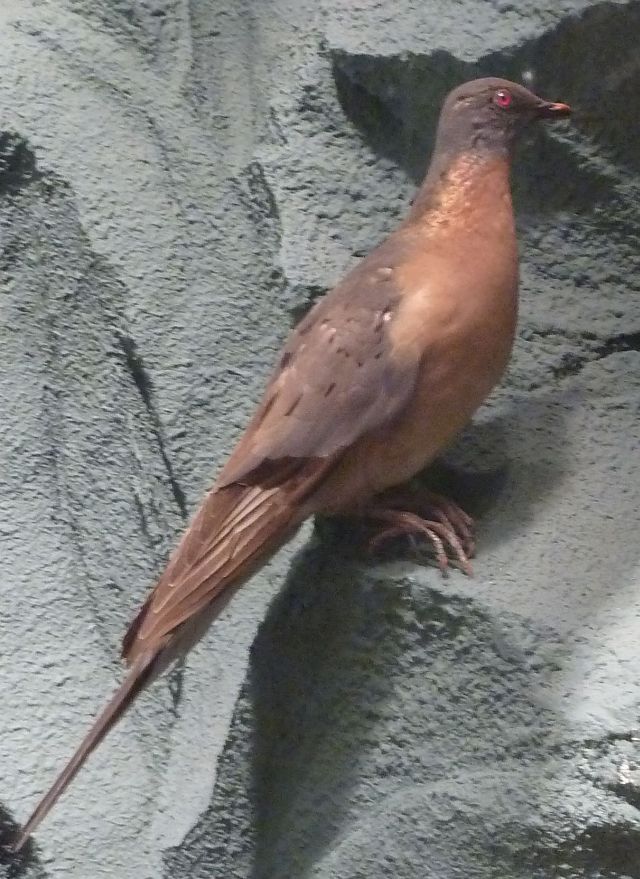When I visited the Ohio Historical Center in Columbus, one of the exhibits was called “Pioneer Ohio.”
It showed the varied habitats (wetlands, tall-grass prairies, hardwood forests) of early 19th century Ohio and how the arrival of European settlers changed the animal population. For example, the loss of the Passenger pigeon.
… once the most abundant bird in the world. In 1813 John James Audubon observed a continuous migration flight of these birds which darkened the sky for three days. Believed by many to be inexhaustible in numbers, Passenger pigeons were netted, clubbed, and even killed by cutting down roost and nest trees at night. Live captive birds, or ‘stool pigeons,’ were tied to stools or perches to decoy wild pigeons into shooting range. Passenger pigeons went from unbelievable abundance to extinction in less than 100 years.
 The above write-up comes from the museum’s interpretive display. Here’s a link for more information on these amazing birds. In its collection, the museum has this stuffed Passenger pigeon, killed in 1900 on a farm in Ohio, believed to be the last documented wild Passenger pigeon. In 1914, the last captive Passenger pigeon, named “Martha,” died at the Cincinnati Zoo.
The above write-up comes from the museum’s interpretive display. Here’s a link for more information on these amazing birds. In its collection, the museum has this stuffed Passenger pigeon, killed in 1900 on a farm in Ohio, believed to be the last documented wild Passenger pigeon. In 1914, the last captive Passenger pigeon, named “Martha,” died at the Cincinnati Zoo.
